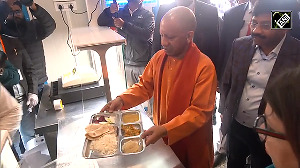Over the past decade, India has been one of the fastest growing economies in the world with an average GDP growth rate of over 5.8 per cent, higher than the Asian and American averages of 4 per cent and 3.6 per cent respectively. India is one of the largest economies in the world based on purchasing power parity and has the potential to become a trillion-dollar economy by 2010.
Reforms initiated over a decade ago have created an environment that fosters growth, from both the macro- and micro-economic perspectives.
India's economy is becoming market-oriented and price-based and this has helped it grow. Acceleration in growth is expected to be sustained in view of the evolving pattern of domestic demand. Consumption is driven by India's young population and growing affluence.
The socio-economic structure has changed from the pyramid shape, as drawn by management guru C K Prahalad, to that of a diamond. Over the next decade, a large part of the low-income class is expected to become part of the middle class. Today, estimates of India's middle class population vary from 350 to 400 million (with an average purchasing power of $15,000 or Rs 6.90 lakh (Rs 690,000) per annum using the Economist Mac index for calculation).
Currently, India has a relatively poor rate of consumption vis-a-vis the developed economies. One could relate this to Maslow's theory on the hierarchy of needs. The Indian mindset was used to deprivation until the mid-1990s. Income streams addressed basic needs and security.
The tax effect
The last few taxation law amendments have changed the consumption patterns of individuals and their attitude towards tax compliance. A simplification drive is on to induce more individuals to file tax returns. Reduction of tax rates, efficiency in tax administration and streamlining of tax collection procedures have changed the mindset of the common man.
The requirements for documents are also being reduced. The proposed introduction of new digitalised Saral forms, would make the system simpler and more consistent.
During the time of licence raj and the ration shops, taxation laws were meant to fulfil basic needs and divert limited income streams towards specified saving channels (read fixed income securities and savings schemes promoted by government agencies).
The tax advisor de facto became an investment advisor/wealth manager. Ways to plan taxes and minimise their incidence were numerous until the last decade. Incentives offered in various provisions of Section 10 (income excluded), Section 54 (ways to plan capital gains taxes), Section 80 (deductions from income) and Section 88 (rebates) of the Income Tax Act were substantial. These were relevant in the age of 'rationing.'
As an economy we have migrated reasonably towards a scenario of abundance and higher affordability. Individuals have moved up Maslow's hierarchy.
The tax incentives currently available are limited. Further, the flexibility in the avenues to divert savings has been enhanced. The government recognises the nation's economic progress and the need to evolve taxation laws in line with it. Along with this, we see a perceptible reduction in the tax manager's role as a wealth manager.
Paradigm shift
India is beginning to see the first signs of a long-term consumption boom as a result of rising disposable incomes, higher life expectancy, rapid urbanisation and changing lifestyles. The increasing base of households with growing disposable income is expected to drive demand for organised retail. This is in sharp contrast to the past situation of a small minority at the top buying luxury goods, while the vast majority lived at subsistence level.
Increasing middle class incomes have led to a substantial change in the profile of the Indian consumer. A larger number of households are getting added to the consuming class, that is, the middle class, with growth in income levels. Corporate houses like the Future group, Reliance and the Tatas have drawn up plans to address this likely rise in demand.
This is the trigger for a cycle wherein demand drives economic growth and this growth translates into better standards of living and sustainable income streams which further increase demand. This results in overall increase in wealth at various strata. The equitable spread of such wealth would be dependant on the entrepreneurial participation of the middle-income households.
For a sustainable model, consumption has to be a principal factor triggering growth. Economic affairs in India are mostly driven by the government at present. However, a shift in the government's view can be seen from the increased focus given to consumption related statistics. It is recognised that private profits should be the major component of the GDP (as is the case in the US) and this would be possible only if the economic orientation is largely private.
Private participation in the economy at present is being adequately supported by a vibrant media which disseminates information effectively. There has also been a continuous shift towards a liberal regulatory environment which would facilitate widespread participation. This increases awareness of the masses about the avenues of wealth creation as well as consumption. The middle class should be viewed through the prism of consumption rather than through the narrow confines of tax shelters.
Market economy
The next decade will belong to consumption. Tax breaks will become secondary while determining priorities. I believe that young professionals would be prepared to pay taxes and, thereby, become more compatible with the current tax system.
We will see consumer and investment behaviour following the basic tenets of risk taking, with investments rising as income levels go up and with the market determining how people spend or invest their money.
The author is a CA and CEO, Haribhakti Group and can be reached at research@haribhaktigroup.com






 © 2025
© 2025